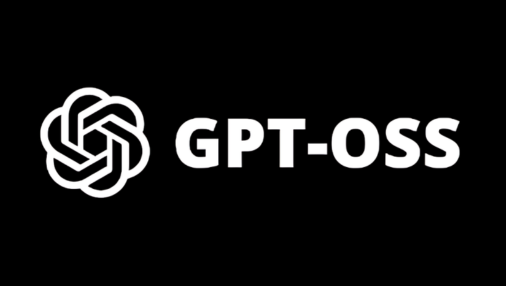The Rise of GPT Open Source Projects: Democratizing AI Innovation
The field of artificial intelligence has experienced explosive growth over the past few years, with large language models (LLMs) like OpenAI’s GPT series leading the charge. While proprietary models such as GPT-4.5 and beyond have set benchmarks in natural language understanding and generation, there’s a parallel movement quietly but steadily gaining momentum: Open Source GPT projects (GPT OSS).
These projects aim to democratize access to cutting-edge language models, fostering transparency, customization, and community-driven innovation. But what exactly is GPT OSS? Why is it important? And how does it shape the future of AI?
What is GPT OSS?
GPT OSS refers to open-source initiatives that develop, replicate, or extend GPT-style language models. These projects are typically hosted on platforms like GitHub, where developers, researchers, and enthusiasts collaborate to build AI models that are openly available to the public.
While OpenAI’s GPT-3 and GPT-4 remain closed-source, several alternatives and derivative projects have emerged to fill the gap. Some prominent examples include:
- GPT-Neo & GPT-J by EleutherAI
- GPT-NeoX (20B model)
- MPT (MosaicML’s LLM series)
- Falcon LLM by TII
- OpenLLaMA (an open reproduction of Meta’s LLaMA)
- Dolly by Databricks
These projects aim to bring high-performance language models into the hands of researchers, startups, and developers without the constraints of proprietary licensing or API paywalls.
Why GPT OSS Matters
1. Transparency and Trust
One of the main criticisms of proprietary AI models is the lack of transparency. Without open access to model weights, training data, and architecture details, it becomes challenging to assess how these models operate, what biases they carry, or how secure they are.
Open-source GPT projects offer full visibility. Researchers can scrutinize the training datasets, fine-tune models for specific applications, and audit them for harmful biases or security risks.
2. Lowering Barriers to Entry
Running or fine-tuning proprietary LLMs is often expensive and access-restricted. Open-source models, however, can be run on local servers, cloud instances, or even consumer-grade GPUs for smaller models.
This opens up AI development to startups, academic institutions, and even hobbyists who previously couldn’t afford the licensing fees or infrastructure costs associated with closed models.
3. Customization & Specialization
Every business has unique needs. Open-source GPT models can be fine-tuned on domain-specific data — legal documents, medical literature, customer service chats, etc. — allowing organizations to create highly specialized AI applications.
In contrast, fine-tuning a proprietary model like GPT-4 often comes with high costs, limited flexibility, and API dependencies.
4. Community Innovation
The open-source AI community is incredibly dynamic. Projects like GPT-NeoX and Falcon are developed through contributions from hundreds of volunteers and researchers. Innovations in training methods, efficiency optimizations, and alignment techniques often emerge first in the OSS space before being adopted by larger players.
Challenges Facing GPT OSS
Despite its promise, the open-source LLM movement isn’t without hurdles:
- Compute Resources: Training large models from scratch requires massive computational resources — often millions of dollars’ worth of GPU time.
- Data Access: High-quality datasets are critical for training performant LLMs. However, many valuable datasets are proprietary or subject to licensing restrictions.
- Alignment & Safety: Ensuring that open-source models behave responsibly (i.e., minimizing harmful outputs) is a significant challenge. OpenAI invests heavily in alignment research; replicating this effort at an open-source level requires significant coordination and expertise.
- Fragmentation: The OSS space is decentralized by nature. This leads to innovation but also to fragmentation, with overlapping projects and duplicated efforts.
The Future of GPT OSS
Hybrid Open-Closed Models
One potential future path is a hybrid approach where foundational models are trained by large organizations but made available with permissive licenses. Companies like MosaicML and Stability AI are experimenting with such approaches, providing powerful models while maintaining open-source ethos.
Efficient Fine-Tuning Techniques
Techniques like LoRA (Low-Rank Adaptation), QLoRA, and Parameter-Efficient Fine-Tuning (PEFT) are game-changers for OSS. They allow models to be fine-tuned with a fraction of the compute and data, making customization accessible to smaller players.
Open Evaluation Benchmarks
Initiatives like EleutherAI's Evaluation Harness and Hugging Face's Open LLM Leaderboard are setting standards for transparent, community-driven model evaluation. These benchmarks ensure that open-source models are held to the same (or higher) standards of performance and safety as their proprietary counterparts.
Regulatory Pressure & Open AI Ecosystem
As governments around the world consider AI regulations, the need for transparent and explainable AI is becoming a policy imperative. Open-source models provide a natural pathway for compliance with such regulations, ensuring auditable and accountable AI deployments.
Conclusion
GPT OSS is not just a technical trend — it’s a philosophical movement aimed at making AI more accessible, transparent, and customizable. While proprietary models will continue to push the envelope in terms of raw capabilities, open-source projects will democratize access, fostering innovation at the grassroots level.
The future of AI will likely be a hybrid landscape, where open-source GPT models coexist and compete with closed systems, driving a healthier, more transparent AI ecosystem for everyone.

